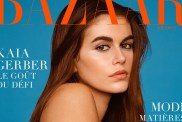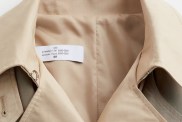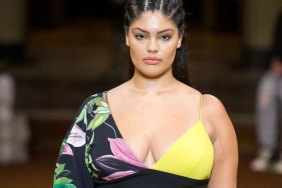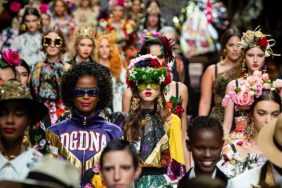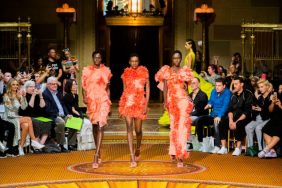Earlier today we jumped on a conference call with fashion publicist and TV personality Kelly Cutrone. Even if you skipped The Hills and The City and Kell on Earth (the reality shows that brought her national fame), you probably know Cutrone’s basic schtick: powerful lady who founded the immensely successful fashion PR firm People’s Revolution; has strong opinions, not afraid to use them.
She made herself available to take questions on her judgeship situation on America’s Next Top Model‘s twentieth cycle, which premieres on August 2 at 8 p.m. For the first time in the show’s epic history, both male and female contestants will participate. Or as the teaser spot put it: “The women of America’s Next Top Model will face their biggest challenge yet: MEN.”
Of course, the men have their own big challenges. They are, after all, aspiring male models in the fashion industry, one of the only areas where the traditional wage gap is reversed. Male models typically earn significantly less than their female counterparts and it’s rare that a guy becomes a household name like Kate or Naomi or Gisele.
Cutrone does not necessarily see it the same way:
“There are plenty of male models who become supermodels,” she said, citing Marcus Schenkenberg. “Of course, women’s advertising and women’s beauty are huge. Women do make more money than men in fashion, it’s one of the only industries where that’s true and we celebrate that. But you know, when you have a hot male model and you’re doing an ad for Dolce & Gabbana, any brand, the combination of male and female model can really push a brand’s reach.”
For aspiring models, Cutrone offers solid, sensible advice: “Don’t quit your day job, go to a reputable agency. Do NOT listen to people in the shopping mall who promise they’ll get you work after you spend $1,000 on a modeling portfolio. [She runs through a list of well-known agencies — Elite, Wilhelmina, Next, Ford, etc.] Go to them and say, ‘I’d like to be considered for your agency. At that point, you’ll be asked for a photograph, you should make it as natural as possible. Hair down, light makeup, jeans, a T-shirt, no nipples showing. Sometimes when people think fashion they think, DONE, but really you want to be as minimalist as possible, a blank canvas that people can project lots of different looks on to.”
But some people should just stay home: “If you’re 5’6″, just stay home. Don’t pretend you’re 5’8″ or 5’9″. If you want to be a beauty model, I guess that’s fine, you can do glamour, but you’re not going to do runway. If you’re over 29 — 26 even — I would suggest you work regionally and not try to work nationally. These are the things no one ever wants to say, because they’re mean, but it’s true. ”
Later on in the conversation, Cutrone returned to fashion’s rigid body standard, explaining why there’s a difference between swim and general fashion models: “It’s really about the breasts. Fashion models are a size 34A or 34B, and their hips are the same, 34 [inches], so essentially you’re looking at a very straight body. So for swim, a girl who’s more curvy or more busty, a 34C — a full C — that’s really what we look for. Someone with ample curves.”
Elaborating on thinness in the fashion industry, Cutrone says, “Most fashion models do not look good in bikinis, because they’re too thin. Society has a hyper emphasis on thin and that trend comes from the consumers — it does not come from the fashion industry. The fashion industry needs to make money, that’s what we do. If people said, ‘we want a 300 pound purple person,’ the first industry to do it would be fashion. You look at the Dove campaign in Times Square — it sticks out like a sore thumb. Those girls in the white T-shirts and underwear, next to Calvin Klein [and all the other fashion ads]. As a consumer, it doesn’t make me want to buy Dove. I’m all for the real look, but as a consumer it doesn’t make me want to buy clothes.”



